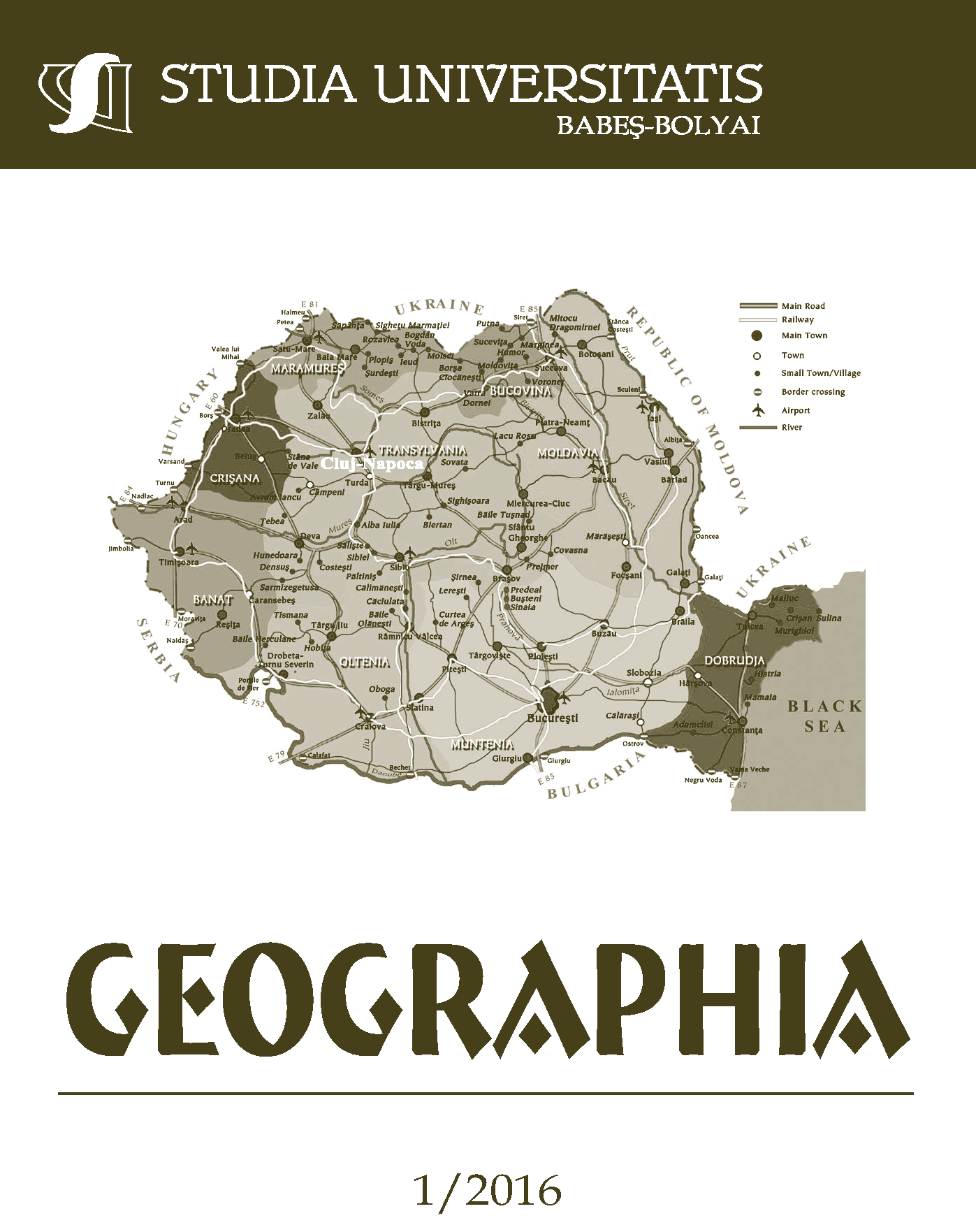MEASURING THE ENERGY POTENTIAL OF BIOMASS FOR FIRING PURPOSES BY STATISTICAL AND GEOGRAPHICAL METHODS IN THE CASE OF A HUNGARIAN SETTLEMENT
Keywords:
biomass, bioenergy, agriculture, rural development.Abstract
Measuring the Energy Potential of Biomass for Firing Purposes by Statistical and Geographical Methods in the Case of a Hungarian Settlement. During our research we developed a method allowing to survey easily and quickly the herbaceous and woody biomass potential of any settlement in Hungary based on statistical and geographical data. Derived from the data, which can obtained from the Hungarian Central Statistical Office, it could be easy to calculate the assumable energy requirements of a given settlement. On the grounds of the method, one can recognize the settlements in a short period of time which may be suitable for the establishment of sustainable biomass-based cogeneration units on the long-term. The method can be applied in other countries as well, if the relevant national statistical database is available. During the research the town of Ibrány, which is lying in the north-eastern part of Hungary (fig. 1), was analysed in detail from multiple aspects. Furthermore, the suitability of Ibrány was analysed in order to find out whether potential bio-energy investments could be implemented in the town or not. In pursuance of the research, based on the Hungarian literature, Ibrány was found to be capable of the implementation of a bio-energy investment.
References
Bai A. (1998), A mezőgazdasági és élelmiszeripari melléktermékek energetikai hasznosításának gazdasági összefüggései, PhD. thesis, Vállalatgazdaságtani Tanszék, Debreceni Agrártudományi Egyetem.
Bai A. (2012), Az energetikai célú biomassza hasznosításának társadalmi-gazdasági kérdései a Hernád-völgyben. – In. Lázár I. (Eds.): A megújuló energiaforrások hasznosításának természeti, társadalmi és gazdasági lehetőségei a Hernád-völgyben. Debreceni Egyetem Meteorológiai Tanszék, Debrecen, pp. 47-60.
Bai A., Durkó E., Tar K., Tóth J. B., Lázár I., Kapocska L., Kircsi A., Bartók B., Vass R., Pénzes J., Tóth T. (2016), Social and economic possibilities for the energy utilization of fitomass in the valley of the river Hernád, Renewable Energy, Volume 85, pp 777-789.
Barkóczy Zs., Ivelics R. (2008), Energetikai célú ültetvények, Erdészeti Kisfüzetek, Nyugat-Magyarországi Egyetem, Sopron, pp. 1-88.
Bentsen S.N., Felby C., Thorsen J.B. (2014), Agricultural residue production and potentials for energy and materials services, Progress in Energy and Combustion Science, 40, pp. 59-73.
Chatterjee A. (2013), Annual crop residue production and nutrient replacement costs for bioenergy feedstock production in United States, Agronomy Journal, 105 (03), pp. 685-695.
Danmarks Statistik (2012), Statistikbanken.dk. Copenhagen, DK: Danmarks Statistik.
Dobos A., Megyes A., Sulyok D. (2006), Fásszárú növények energetikai célú hasznosításának lehetőségei a Nyírbátori kistérségben, Debrecen, 6-30 p.
Ericsson K., Nilsson L. (2006), Assessment of the potential biomass supply in Europe using a resource-focused approach, Biomass and Bioenergy, 30, pp. 1-15.
Fábián Cs. (2008), A kukoricaszár ipari hasznosítása, 2008.
Johannes M. (2013), The Sustainability of Decentralized Bioenergy Production, - Case Study: The ‘Bioenergy Village’ Bollewick, Master’s Thesis, Uppsala University, Department of Earth Sciences, Uppsala, pp. 14-23.
Juhász Gy. (2006), A régióra jellemző mezőgazdasági hulladékok és melléktermékek tüzeléstechnikai alkalmazása, PhD. thesis, Géptani Tanszék, Debreceni Egyetem, 2006.
Kretschmer B., Allen B., Hart K. (2012), Mobilising cereal straw in the EU to feed advanced biofuel production, Institute for European Environmental Policy, London.
Marosvölgyi B. (2002), Új igények és lehetőségek a fa energetikai hasznosításában, X. Wood-Tech Erdészeti Szakmai Konferencia, Budapest, 2002.
Perlack R.D., Wright L.L., Turhollow A.F., Graham R.L., Stokes B.J., Erbach D.C. (2005), Biomass as feedstock for a bioenergy and bioproducts industry: the technical feasibility of a billion-ton annual supply, Oak Ridge National Laboratory, Springfield.
Pintér G. (2012), Egyes mezőgazdasági melléktermékek energetikai hasznosításának lehetőségei Magyarországon, Ph.D thesis, Pannon Egyetem, Keszthely, pp. 50-82.
Pintér G., Németh K., Kis-Simon T. (2009), A szőlővenyige és a fanyesedék biomasszaerőművi beszállításának elemzése, Gazdálkodás, 53 (4), 357 p.
Popp J. (2011), A biomassza energetikai célú termelése Magyarországon, Agrárgazdasági Könyvek, Budapest, pp. 1-156.
Scarlat N., Martinov M., Dallemand J. F. (2010), Assessment of the availability of agricultural crop residues in the European Union: potential and limitations for bioenergy use, Waste Manage, 30 (10), pp. 1889-1897.
Schmuck P., Eigner-Thiel S., Karpenstein-Machan M., Sauer B., Hans R., Girschner W., Roland F. (2013), Bioenergy Villages in Germany: Applying the Göttingen Approach of Sustainability Science to Promote Sustainable Bioenergy Projects In: Hans R., Martin K., Jens I. (eds.), Sustainable Bioenergy Production - An Integrated Approach, pp. 37-71.
Torben S. (2011), Innovation netvork for biomass, Straw to energy – Status, Technologies and Innovation in Denmark, Agro Business Park A/S, Tjele.
U.S. Department of Energy (2011), in Perlack R. D., Stokes B. J. (eds.), U.S. billion-ton update: biomass supply for a bioenergy and bioproducts industry, Oak Ridge National Laboratory, Tennessee, 227 p.
Weiser C., Zeller V., Reinicke F., Wagner B., Majer S., Vetter A., Thraen D. (2013), Integrated assessment of sustainable cereal straw potential and different straw-based energy applications in Germany, Applied Energy, 114, pp. 749-762.
Downloads
Published
How to Cite
Issue
Section
License
Copyright (c) 2016 Studia Universitatis Babeș-Bolyai Geographia

This work is licensed under a Creative Commons Attribution-NonCommercial-NoDerivatives 4.0 International License.





 ©Studia Universitatis Babeş-Bolyai Geographia. Published by Babeș-Bolyai University.
©Studia Universitatis Babeş-Bolyai Geographia. Published by Babeș-Bolyai University.